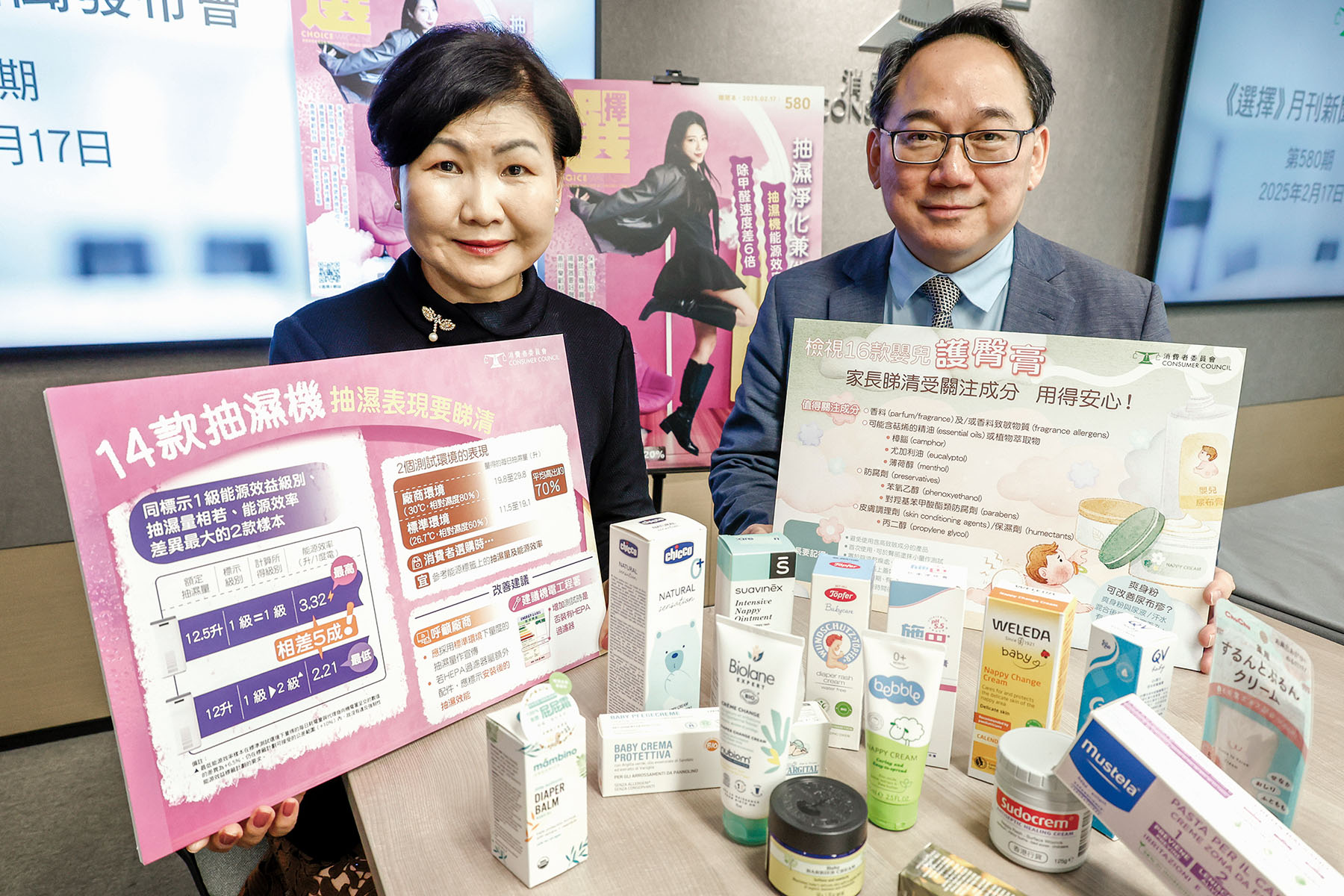
The consumer watchdog urged manufacturers to label dehumidifying capacity measured under a standard test environment -- 26.7 degrees with a 60-percent relative humidity -- when promoting their products.
Consumers are also reminded that the variance in energy efficiency of different models could lead to as much as a 54-percent difference in electricity costs.
The suggestions came as Hong Kong entered a season of “damp days”, marked by rising humidity that often lasts from February to April.
ALSO READ: Consumer Council: Carcinogen found in 29 cooking oils
The council said in its February issue of Choice Magazine, published on Monday, it teamed up with the Electrical and Mechanical Services Department to test 14 models of compressor-type dehumidifiers with dehumidifying capacities ranging from 19.8 to 29.8 liters, including eight models that could be installed with High Efficiency Particulate Air filters for air purification.
The dehumidifiers were tested in two environment conditions. In the standard test environment -- a condition adopted under the city’s Mandatory Energy Efficiency Labeling Scheme and US national standards, five measured models were fund to have performed lower than the value claimed by 0.5 to 6.8 percent, although the discrepancy is still within acceptable international standards.
Under the environment generally favored by manufacturers -- 30 degrees with a relative humidity rate of 80 percent -- although seven models failed to meet the rated values, also within the acceptable tolerance range, all the models were found to have a relative humidity rate of about 56 to 82 percent higher than under standard test conditions.
The watchdog urged manufactures to stop advertising products based on tests in favored conditions as the results cannot reflect the actual indoor environment.
ALSO READ: Consumer Council finds excessive cadmium in chocolate sample
Although all the models tested had obtained the Grade 1 energy label -- representing the most energy efficiency in a five-level system -- the 12 dehumidifiers’ energy efficiencies are varied, too, according to the study.
Based on an estimated annual usage of 450 hours -- about five hours daily over 90 days, at HK$1.70 ($0.22) per unit of electricity -- the electricity cost for the four models with higher claimed dehumidifying capacity would be between HK$194 and HK$218, while that for the 10 models with lower rated capacities would range from HK$127 to HK$196. This reveals a substantial cost variance of about 54 percent between the lowest and highest capacity models.
The council’s study also found that installing HEPA filters on dehumidifiers would reduce their dehumidify performance.
Among the eight types applicable for installing HEPA filters, two models had the option to install HEPA filters or not, and consumers were reminded that installing the gifted or additionally purchased HEPA filters might adversely affect their dehumidifying performance.
READ MORE: Consumer Council: 30% of power banks fail safety tests
The study shows that with HEPA filters installed under the standard test environment, the dehumidification volume decreased by 18.4 percent and 30.1 percent, respectively, and the energy efficiency of the samples also dropped by 26.2 percent and 40.7 percent, respectively.
It’s estimated that the annual electricity cost for dehumidifying would rise by 10.6 percent and 18.3 percent, respectively.
The council suggested that the ESMD disclose whether HEPA filters were installed during energy efficiency testing to help consumers compare and make informed choices.
Manufacturers can also provide information on their packaging about the difference between the standards test environment and the producer-used environment, as well as the dehumidifying performance, before and after installing HEPA filters to enhance consumers’ understanding of a product’s overall performance, the council said.
Other issues raised in the latest issue of Choice Magazine included a finding that 75 percent of on-sale hip protection cream products contained ingredients that could make babies allergic, the qualities of customer-provided cups and home-use audio speakers, as well as a survey on using technologies to improve elderly people’s lives.


